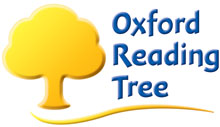EFL eikaiwa online resources Reading rikai self-study SHS technology university
by sendaiben
1 comment
Popjisyo supports online reading for learners of English or Japanese
 I am a big fan of rikai and it’s various browser plugins (little programs you can download to add to the Firefox or Chrome browsers that give you rikai’s functionality), but the main page has personal ads on it, so I feel a bit hesitant about introducing it to students. Rikai allows you to copy and paste text or go to a website, and then provides mouseover (popup) vocabulary for words on the page. Basically, if you don’t know a word, you can move your mouse cursor over it, and a translation will pop up. It is incredibly quick and makes reading online very easy. Mouseover translations are much better than using translation software because they allow you to figure out a text rather than scrambling it, as is so often the case with machine translation between Japanese and European languages.
I am a big fan of rikai and it’s various browser plugins (little programs you can download to add to the Firefox or Chrome browsers that give you rikai’s functionality), but the main page has personal ads on it, so I feel a bit hesitant about introducing it to students. Rikai allows you to copy and paste text or go to a website, and then provides mouseover (popup) vocabulary for words on the page. Basically, if you don’t know a word, you can move your mouse cursor over it, and a translation will pop up. It is incredibly quick and makes reading online very easy. Mouseover translations are much better than using translation software because they allow you to figure out a text rather than scrambling it, as is so often the case with machine translation between Japanese and European languages.
A while ago I found an acceptable alternative in popjisyo. It has the same functionality as rikai, but looks much more respectable. It also has a very cool ‘save to vocabulary list’ function, where if you double click on a word it saves it and then gives you the option of emailing the list to yourself. A great way to keep track of all the words you couldn’t understand during your web surfing session. Best of all popjisyo doesn’t require registration and is available in both Japanese and English, so it is very easy to introduce to students.
On the whole, junior and senior high school students tend not to be as impressed with the site, as almost all of their English studying is still through textbooks. University students, on the other hand, were extremely excited by the prospect of being able to read articles online in a more efficient way.
I recommend popjisyo (or rikai, they are very similar) to anyone who is studying or using Japanese or English (they have functionality for other languages too, but I haven’t personally tried them). I use them for two main tasks:
1. Reading email
I get a lot of group emails at work, most of which do not really pertain to me. If I can’t get the gist quickly, I cut and paste the email into popjisyo and can scan it easily using the popup translations to fill in unknown words.
2. Reading websites
This is a form of extensive reading, where I use popjisyo to make websites easy enough to read for fun. As an added bonus, I can save words by emailing them to myself and come back and review them later.
As tools, these websites can allow us to interact with our target language much more quickly and effectively. While there is a place for intensive reading and meticulous dictionary use in study, sometimes we just need to get a rough idea of the meaning and move on. Popjisyo and rikai allow us to do that.
*I talk about rikai in a previous post about learning Japanese here.
The Oxford Reading Tree
 I am very interested in teaching English to children, and spend a lot of time thinking about how to possibly do it in a more efficient way. At the English school I advise, Cambridge English, we have a strong phonics and reading program.
I am very interested in teaching English to children, and spend a lot of time thinking about how to possibly do it in a more efficient way. At the English school I advise, Cambridge English, we have a strong phonics and reading program.
I love reading, and I am a strong believer in the power of reading to allow students to absorb language (I am a Krashenite at heart). It is my goal to allow my students to start reading in English, to encourage them to continue, and to empower them to become confident and voracious readers after they finish at our school.
In order for that to happen, students need a strong foundation of systematic phonics instruction, phonetically decodable reading material to start with, and interesting material to fuel the flame once they get used to reading words and sentences.
The Oxford Reading Tree provides the third ingredient above. I was originally introduced to the series by a colleague who used it with his own children and students, and quickly came to love the characters, the pictures, the humour, and above all, the warmth of the series. The ORT is not phonically decodable (although it has phonics-based components among its 500+ books), so it is less suitable than other series (such as Jelly and Bean) for absolute beginner readers. However, the strong stories and characters make it perfect for students who are starting to read for pleasure.
We use the ORT in three ways at Cambridge English:
1. Story Time
The teacher will read a book to the students, helping with unfamiliar vocabulary, asking questions about the story and the pictures, and asking students to predict what will happen.
2. Free Reading in Class
Students are given reading time (normally 5-10 minutes), during which they can choose any book of a suitable level to read. They read independently, and record basic information about each book they read as they finish them.
3. Reading Homework
Students borrow books to read at home, either in a structured manner where the books are assigned and students are supposed to read to their parents, or a freer style more like the in-class reading above.
The ORT has clearly defined levels which make it easy to see which books students should be reading, and our school has several sets of the trunk stories (the fiction ones with Biff, Chip, Kipper, etc.) so we have the option to let some students borrow books while others read in class.
As you can probably tell, I love the ORT stories myself (I find the materials that work best for me are the ones I actually like, as I find it much easier to be enthusiastic about them), so I was delighted when Oxford University Press Japan asked me to present about it at the ETJ Expos. I did one presentation in Sendai on the 3rd of October, and I’ll be doing another one in Tokyo on the 7th of November, at the Tokyo ETJ Expo. I’ll be talking more in depth about why reading is so important for Japanese students, and about how parents, teachers, and school administrators can use the ORT to strengthen English skills and programs.
I hope some of you can make it, it should be a great weekend.
Google instant translation of paper text
This is just a prototype now, but I reckon we’ll see fully functional apps for iphone and android within the year. Amazing stuff.
Basically you take a photo of some text with your mobile phone, then it gets uploaded to the web and translated almost instantly. Good for menus, signs, instructions, etc.
EFL India Pratham Books readers Reading reviews teaching culture
by sendaiben
leave a comment
Pratham Books (low cost readers from India)

I recently ordered the full range of English language readers from Pratham Books in India to review them for our school. They are an NPO that focuses on literacy in India, and aim to provide low-cost, attractive materials for children. Benefits include very cheap books and the knowledge that by purchasing their materials you are supporting their charitable activities.
SRA Reading Labs
 I recently had the opportunity to try out an SRA Reading Lab for a couple of weeks (thank you, David from McGraw-Hill in Tokyo) and was very impressed with the material.
I recently had the opportunity to try out an SRA Reading Lab for a couple of weeks (thank you, David from McGraw-Hill in Tokyo) and was very impressed with the material.